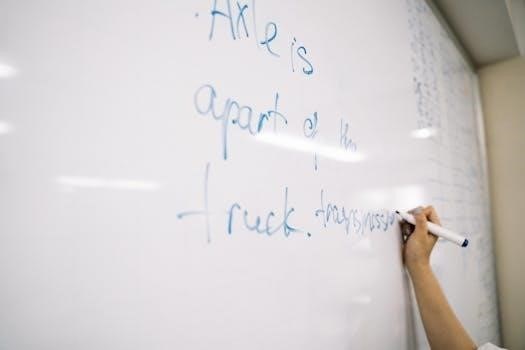The SaluSpa Coronado is a popular inflatable hot tub designed for relaxation and hydrotherapy. This guide provides access to essential information, including manuals, specifications, and support resources for optimal enjoyment and safe operation.
Overview of the SaluSpa Coronado Inflatable Hot Tub
The SaluSpa Coronado is an inflatable hot tub designed for 4-6 adults, offering a portable and convenient way to enjoy spa-like relaxation. Featuring an EnergySense insulated cover, it enhances energy efficiency. The system includes a digital control panel, integrated filtration, and a built-in Wi-Fi module for smartphone app control. Its inflated size is approximately 71 x 71 x 28 inches and holds 177 gallons of water. The unit includes an automatic heating system and air jets for a soothing massage experience. It is important to read the owner’s manual carefully before setting up or using this product.

Key Features and Specifications
This section details the SaluSpa Coronado’s dimensions, capacity, control system, energy efficiency, and smart features. Understanding these specifics ensures proper use and maintenance of the hot tub.
Inflatable Size and Capacity
The SaluSpa Coronado boasts an inflated size of 71 inches by 71 inches and a height of 28 inches (1.80m x 1.80m x 71 cm). This square-shaped inflatable hot tub is designed to comfortably accommodate 4-6 adults, making it perfect for small gatherings or family use. Its water capacity at 80% fill is approximately 177 gallons, ensuring a good depth for a relaxing soak. The dimensions and capacity allow for a comfortable spa experience without taking up too much space. Always ensure the hot tub is placed on a flat, level surface that can support the filled weight, for optimal performance and safety. It’s important to consider these size and capacity specifications when determining the appropriate location for your SaluSpa Coronado.
Digital Control Panel and Integrated Filtration System
The SaluSpa Coronado features a user-friendly digital control panel which simplifies the operation of the hot tub. This panel allows you to easily adjust the water temperature, activate the massage system, and manage other settings. The integrated filtration system works in conjunction with the pump to keep the water clean and clear, removing impurities and debris to ensure a hygienic and pleasant experience. This filtration system is vital for maintaining the quality of the water and extending its use. The control panel is designed for intuitive operation, making it easy for users of all levels of technical skill to get the most out of their hot tub. The system combines convenience and effectiveness for effortless upkeep.
EnergySense Technology and Insulated Cover
The SaluSpa Coronado incorporates EnergySense technology, designed to enhance energy efficiency and reduce heating costs. This innovative feature optimizes the hot tub’s heating process, helping maintain the desired temperature with minimal energy consumption. Complementing this technology is an insulated cover, which provides an extra layer of protection. The insulated cover helps to retain heat within the spa, further reducing energy waste and shortening the time needed to reheat the water. This dual approach not only lowers operational costs but also ensures a more consistent and enjoyable experience, keeping the water warm for longer periods. The cover helps keep debris out of the spa, maintaining water cleanliness.
Built-in Wi-Fi Module and Smartphone App Control
The SaluSpa Coronado features an integrated Wi-Fi module, enabling seamless connectivity to your smartphone. This advanced feature allows users to control and monitor their spa remotely via a dedicated mobile app. Through the app, you can conveniently adjust the water temperature, activate the massage jets, and set timers, all from the comfort of your home or on the go. This smart functionality provides unparalleled ease of use and flexibility, ensuring your spa is always ready when you are. The intuitive interface of the app simplifies the management of your spa’s settings, allowing you to personalize your experience. The Wi-Fi connectivity enhances the overall user experience and convenience.

Safety and Usage Instructions
Prioritize safety by thoroughly reading the owner’s manual before use. Adhere to all safety guidelines to prevent accidents. Proper electrical connections and maintenance are essential for safe operation.
Importance of Reading the Owner’s Manual
The owner’s manual for the SaluSpa Coronado is an indispensable resource, containing crucial information for safe and effective use. It provides detailed instructions on setup, operation, maintenance, and troubleshooting. Carefully reviewing this manual before initial use is paramount, as it outlines potential risks and how to mitigate them. This includes safety precautions related to electrical connections, water quality, and proper usage guidelines. The manual also covers specific requirements for connecting the unit and replacing suction fittings, ensuring all components function correctly and safely. Ignoring these instructions can lead to not only a reduced lifespan of the hot tub but also a risk of injury or damage. The manual also provides guidance on warranty and support, offering assistance when needed. By thoroughly understanding the contents of the manual, users can maximize their enjoyment of the SaluSpa Coronado while minimizing potential hazards and ensuring its long-term performance. Ultimately, the manual is your best tool for a safe and relaxing experience.
Safety Precautions for Water Recreation
When using the SaluSpa Coronado, adhering to general water safety precautions is crucial for preventing accidents and injuries. Never allow unsupervised children near the hot tub, and always maintain constant vigilance when children are in or around the water. Avoid using the spa while under the influence of alcohol or medications that may impair judgment or coordination. Do not allow diving or jumping into the spa, as it is not designed for such activities and may result in severe injuries. Check the water temperature before entering to avoid scalding, and limit soak times to prevent overheating and dehydration. Ensure proper water balance and sanitation to minimize the risk of bacterial growth and infections. Be aware of the potential for slippery surfaces around the spa and take extra care when entering and exiting. Keep all electrical devices away from the water to avoid the risk of electrocution. These measures promote a safe and enjoyable experience for all users, ensuring that the SaluSpa Coronado provides relaxation without any unwanted incidents.
Electrical Safety and Suction Fitting Requirements
Electrical safety is paramount when operating the SaluSpa Coronado. Always ensure that the hot tub is connected to a properly grounded electrical outlet to avoid the risk of shock. Never use extension cords or adapters. Regularly inspect the power cord and plug for any damage and replace them immediately if issues arise. Keep all electrical components and controls away from water to prevent electrical hazards. The SaluSpa Coronado utilizes suction fittings as part of its water circulation system. It is vital to ensure these fittings are correctly installed and securely in place, with no obstructions. Damaged or missing suction fittings can create a dangerous entrapment risk. If any issues are detected with the fittings or electrical components, immediately stop using the spa and seek professional assistance. Refer to the owner’s manual for detailed instructions on inspecting, maintaining, and replacing suction fittings, and take all electrical safety measures seriously for a secure hot tub experience.

Troubleshooting and Maintenance
This section addresses common issues, such as heating problems, and offers tips for maintaining your SaluSpa Coronado. Regular maintenance is key for optimal performance and longevity.
Common Heating Issues and Troubleshooting Steps
One frequent concern with the SaluSpa Coronado is the unit’s inability to reach the desired temperature. If your spa is not heating correctly, begin by verifying that the filter is clean and not clogged, as this can impede water flow and affect heating efficiency. Ensure the spa is filled to the correct water level, as too little or too much water can also impact heating performance. Check the power source to confirm that the unit is receiving adequate electricity and that all connections are secure. If the problem persists, consult the owner’s manual for specific troubleshooting instructions related to heating elements and error codes. Additionally, examine the surrounding environment; extreme cold can impact the heating process, and it might be necessary to use the insulated cover to conserve heat. If these measures fail to resolve the issue, reaching out to customer support or community forums may provide additional guidance from experienced users.Remember, maintaining ideal water temperature is essential for a safe and relaxing experience.
General Maintenance Tips for Optimal Performance
To ensure your SaluSpa Coronado operates efficiently and lasts longer, regular maintenance is essential. Start by frequently cleaning the filter cartridge, as a clogged filter hinders water circulation and heating. Regularly check the water chemistry using test strips, maintaining proper pH and sanitizer levels to prevent algae growth and protect the spa’s components. After each use, make sure to cover your hot tub with the provided cover, whether it is the standard cover or the EnergySense insulated version, to reduce heat loss and keep debris out. Periodically drain and refill the spa with fresh water, and remember to clean the spa’s interior surfaces to prevent buildup. Inspect all connections and fittings for any leaks or damage regularly. By following these simple maintenance tips you can extend the life of your spa and ensure a consistently enjoyable experience. Lastly, consult the manual for specific manufacturer recommendations.

Additional Resources
For further assistance, access downloadable manuals online or explore community forums. Customer support is also available to answer any questions regarding your SaluSpa Coronado.
Where to Find and Download Manuals
Locating the correct manual for your SaluSpa Coronado is crucial for safe and effective use. The primary source for these documents is often the official Bestway website, the manufacturer of SaluSpa products. Look for a dedicated support or downloads section, where you can typically filter by model number (S100105 or S100205) to find the specific manual for your Coronado hot tub. These manuals are commonly available in PDF format, making them easy to download and view on various devices. Alternatively, third-party websites that specialize in product manuals may also host copies; however, ensure that the source is reputable to guarantee the manual’s accuracy and completeness. Always double-check the manual version to ensure it aligns with your exact model, as there might be slight variations. Remember, the owner’s manual is critical for understanding safety instructions and operation procedures.
Customer Support and Community Forums
Navigating issues with your SaluSpa Coronado can be significantly easier with access to reliable support channels. For direct assistance, the official Bestway customer support is the first point of contact. They offer help through their website, email, or phone, and can address specific questions related to your product. Beyond manufacturer support, community forums can be a great resource. These forums are often populated by fellow SaluSpa users who share experiences, troubleshooting tips, and best practices, and searching for specific threads can be beneficial. These forums can also help with common issues, such as heating problems, or setup questions. Actively participating in these communities also lets you ask questions and get real-time advice from experienced users. These collective resources provide a comprehensive support system, ensuring you get the most out of your SaluSpa Coronado experience.





